About Rorschach.org
Promoting the ethical use of the Rorschach Inkblot Test
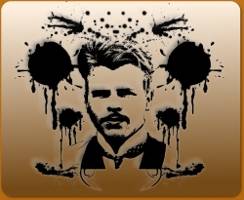 Established in 1996, as "The Original Rorschach Website," Rorschach.org was founded by Mark W. Matthews, PhD and aims to continue providing an online resource for information about the ethical and professional use of Rorschach Inkblot Test. To this end, we have collected a variety of resources and products to help the student and professional administer, score, and interpret the Rorschach Inkblot Test in an ethical, reliable, and valid manner.
Established in 1996, as "The Original Rorschach Website," Rorschach.org was founded by Mark W. Matthews, PhD and aims to continue providing an online resource for information about the ethical and professional use of Rorschach Inkblot Test. To this end, we have collected a variety of resources and products to help the student and professional administer, score, and interpret the Rorschach Inkblot Test in an ethical, reliable, and valid manner.
Our vision is to provide fair, unbiased, accurate, and useful professional, scientific and objective information to students, professionals, and lay persons regarding the Rorschach Inkblot Test.
For the record, we are in favor of trained and skilled professionals utilizing the Rorschach in an appropriate manner, in appropriate settings, and to answer appropriate clinical questions.
Much of the controversy regarding the Rorschach Inkblot Test surrounds the definition of the word "appropriate."
A self-evaluation online is by no means appropriate. The original cards used are shown below. We have also created a gallery of custom cards along with offering recommended books, historical information, and an FAQ section.
The following video offers a brief history of the test.
What Is The Rorschach Test?
The test is conducted by a professional psychologist on subjects ranging between ages 5 and adulthood. Adminstrators typically sit side-by-side to ensure they do not influence the participants answers.
The test consists of a series of 10 symetrical blots where the subject states what they see. These slides are shown in the same order to align modern observations with historical performance.
While some sites offer A/B/C/D online quizes that purport to represent the rorscach test, those do a poor job of representing the actual test. The open ended nature of the test allows subjects to state a wide range of observations based on their perceptions & emotional state. An online quiz where users select among pre-determined choices has no way to capture this depth.
Blot Card 1
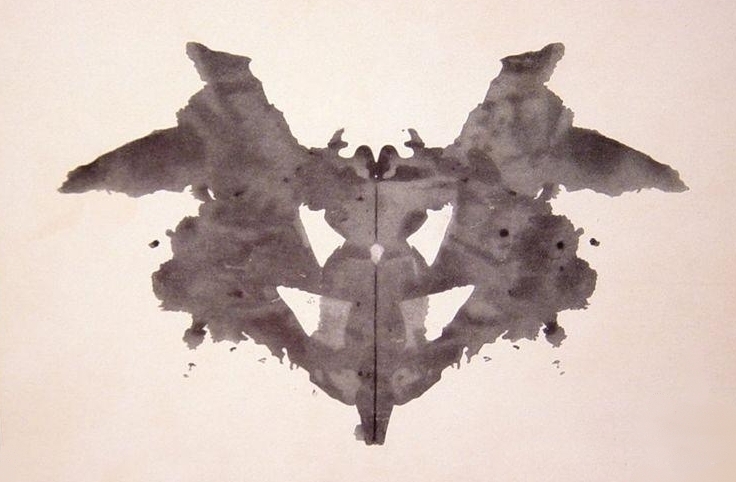
Popular resonses: bat, butterfly, moth
This card is a relatively easy one in the series, with much of any asosciated stress in dealing with it being trying to understand how to conduct a new task.
Blot Card 2
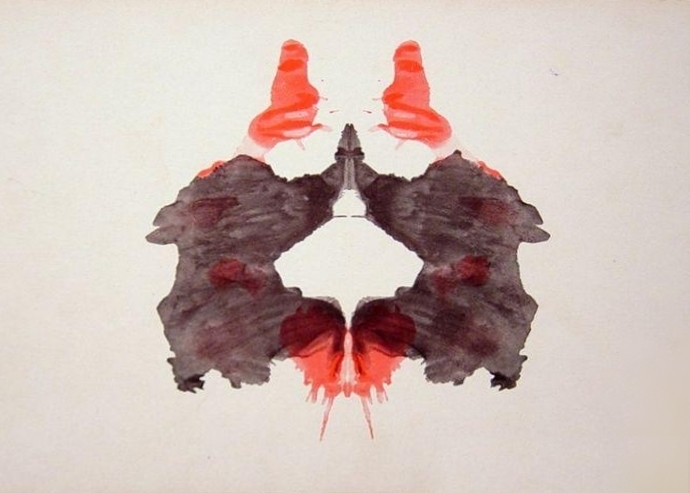
Popular responses: two humans, four-legged animal such as a dog, elephant or bear
Many subjects interpret the red as blood, which can display how the subject might respond to feelings of anger or physical harm. Some also associate the blood with power & have sexual responses to the card.
Blot Card 3
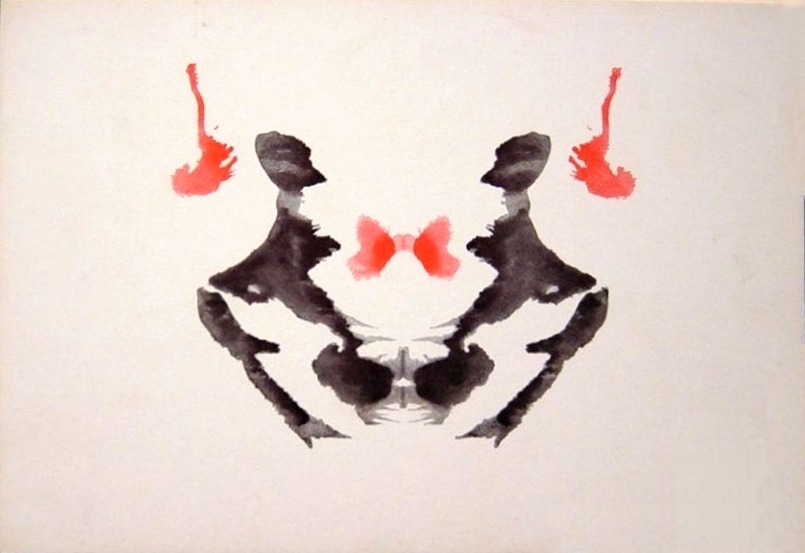
Popular responses: two people
Responses to this card can show if people have struggles in managing social settings & how they interact with others.
Blot Card 4
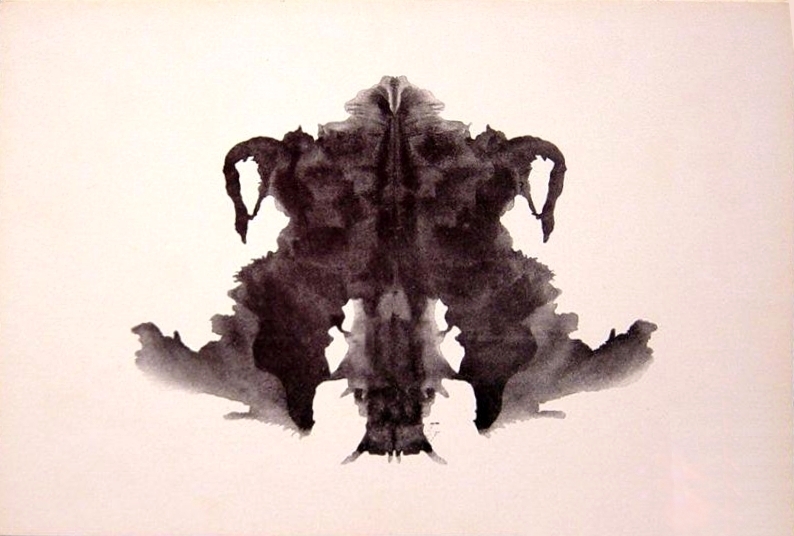
Popular responses: animal hide, animal skin, skin rug
The dark color of this blot can pose difficulty for depressed subjects. The "face" appears to be looking downward which makes it look like one is looking "up" at an imposing monster, to understand how one responds to authority. The card is often perceived as being associated with a male figure, which is why the card is often called "The Father Card."
Blot Card 5
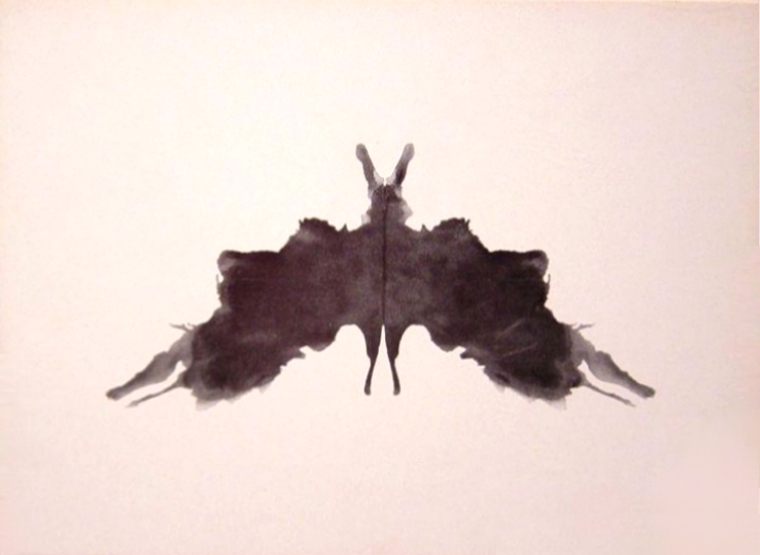
Popular responses: bat, butterly, moth
This card is viewed as a transition card that does not typically evoke strong emotional response. The topic is usually seen as non-threatening & indicate a "change of pace" to where the test will become easier.
Blot Card 6
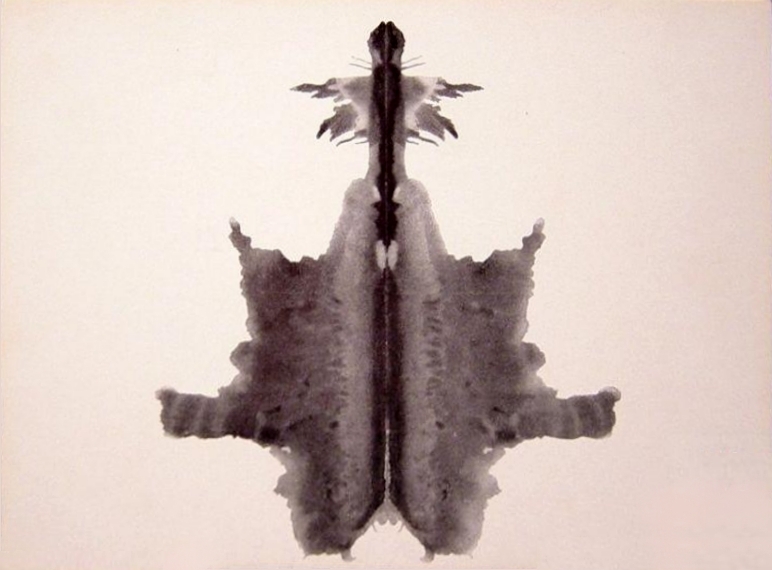
Popular responses: animal hide, animal skin, skin rug
While the core interpretation is of a similar topic to blot card 4, the texture of this blot stands out as a stronger feature. This can elicit associations related to itnerpersonal closeness & is associated with sex more than any of the other cards.
Blot Card 7
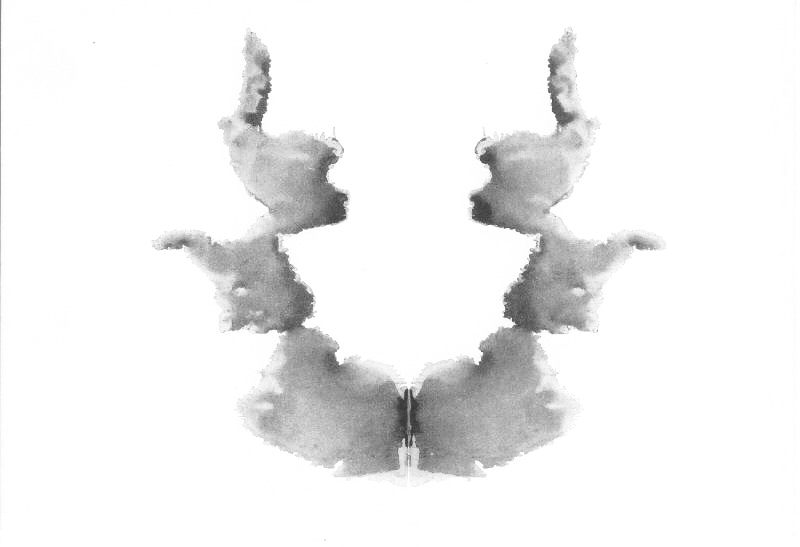
Popular responses: human heads, faces, heads of women or children
This card can be asssociated with feminity & it functions as the "mother card." If a person struggles to respond to this card it could indicate one has difficulty with female figures in their life. In some cases the blot can be associated with a vagina, relating to female sexuality.
Blot Card 8
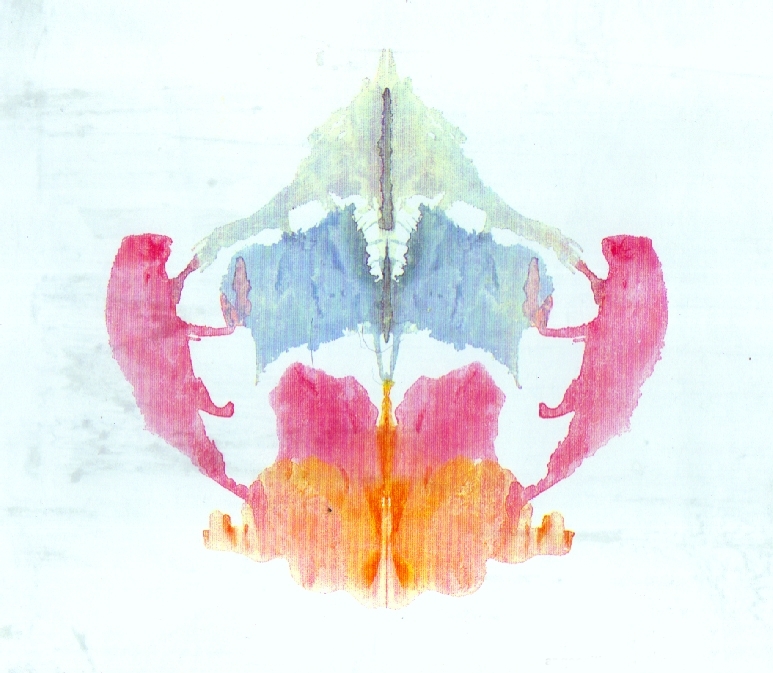
Popular responses: pink four-legged animal, some animal other than a cat or dog
The color in this card brightens the mood when compared to the black & white blots. This change in color also creates a perceived "change of pace" though adding color to the card along with the additional details can overwhelm people who struggle to cope with complex situations.
Blot Card 9
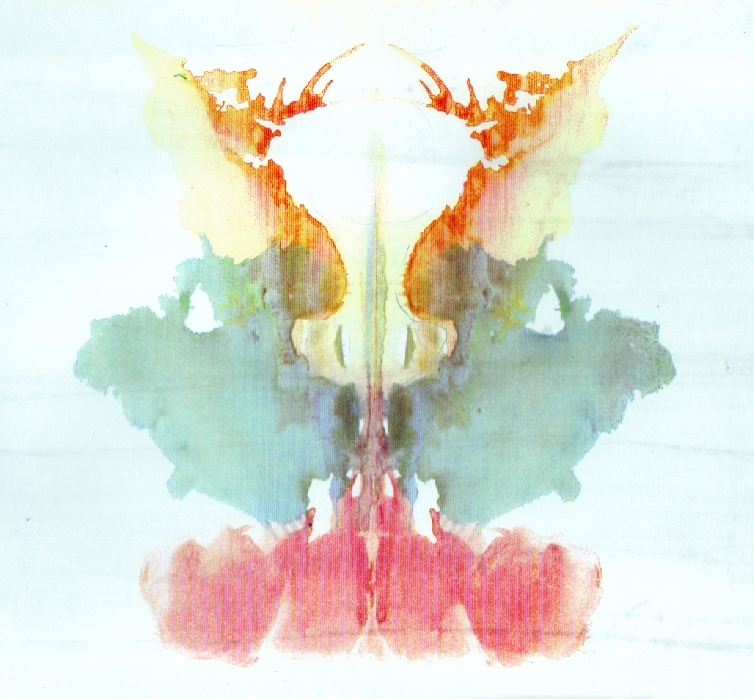
Popular response: human
This card is generally vague, relying on diffuse, muted chromatic features & an indistinct form. This, in turn, means many people struggle with finding anything specif of note in it. Though if a subject has difficulty processing this card to generate a response it can indicate trouble dealing with unstructured data.
Blot Card 10
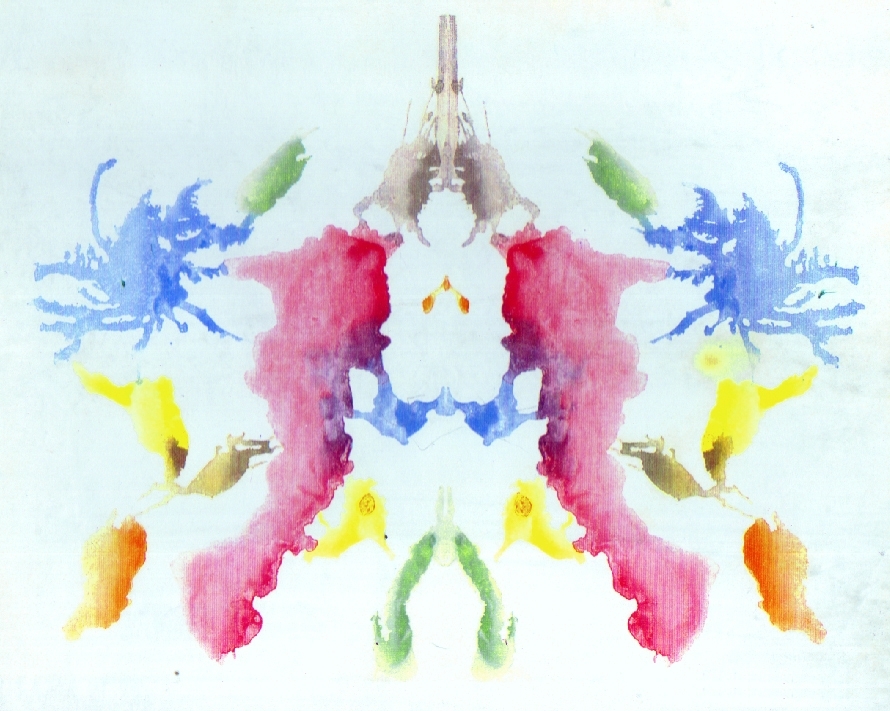
Popular responses: crab, lobster, blue spider, rabit head, worms, snakes, caterpillars
Subjects are aware this card is the last one, so it may give them an opportunity to reveal anything they wanted to state but failed to state thusfar. The complexity of it may overwhelf some people who can not manage significant concurrent stimuli.
Rorschach.org is licensed under a Creative Commons Attribution-NonCommercial-ShareAlike 3.0 Unported License
